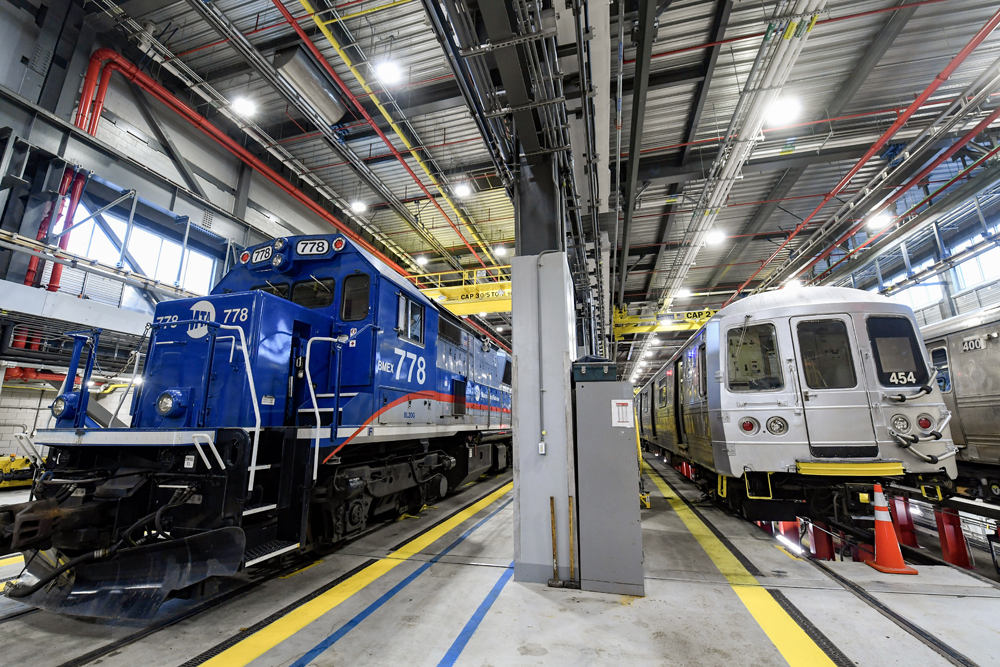
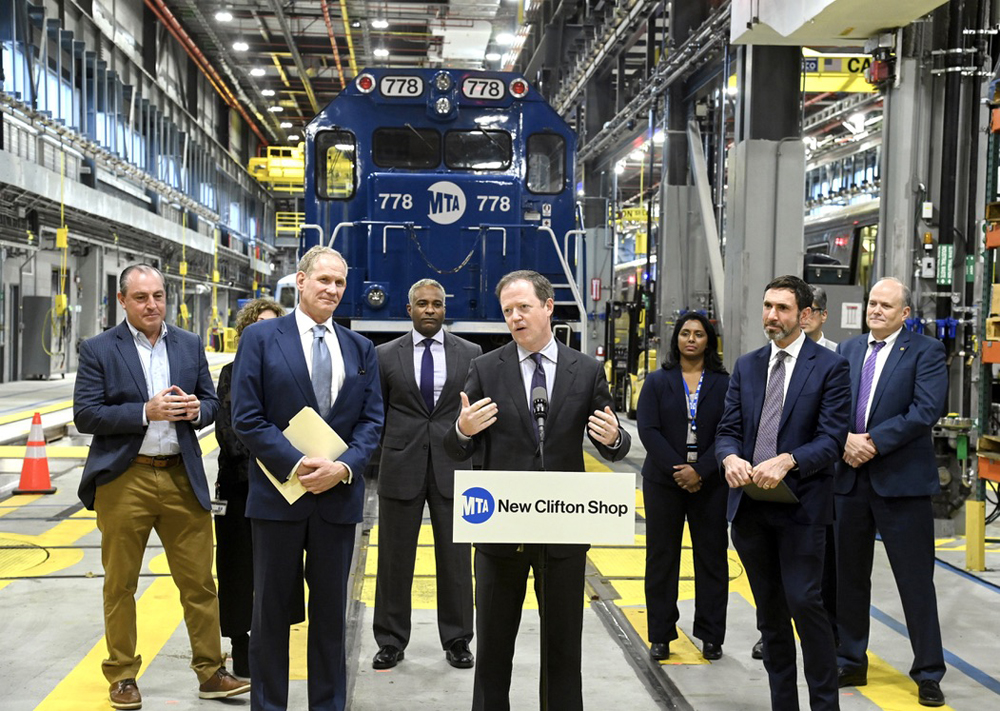
STATEN ISLAND, N.Y. — The Metropolitan Transportation Authority on Wednesday marked completion of the Clifton Maintenance Shop on Staten Island, the rebuild of a facility extensively damaged by Hurricane Sandy that has been upgraded to withstand Category 2 hurricane winds and a water surge of up to 3 feet.
The 93,220-square-foot facility includes Staten Island Railway administrative offices and support buildings. The shop includes four tracks for car inspections and repairs and an overhead lifting system for changing roof-mounted air conditioning units or lifting carbodies for truck maintenance.
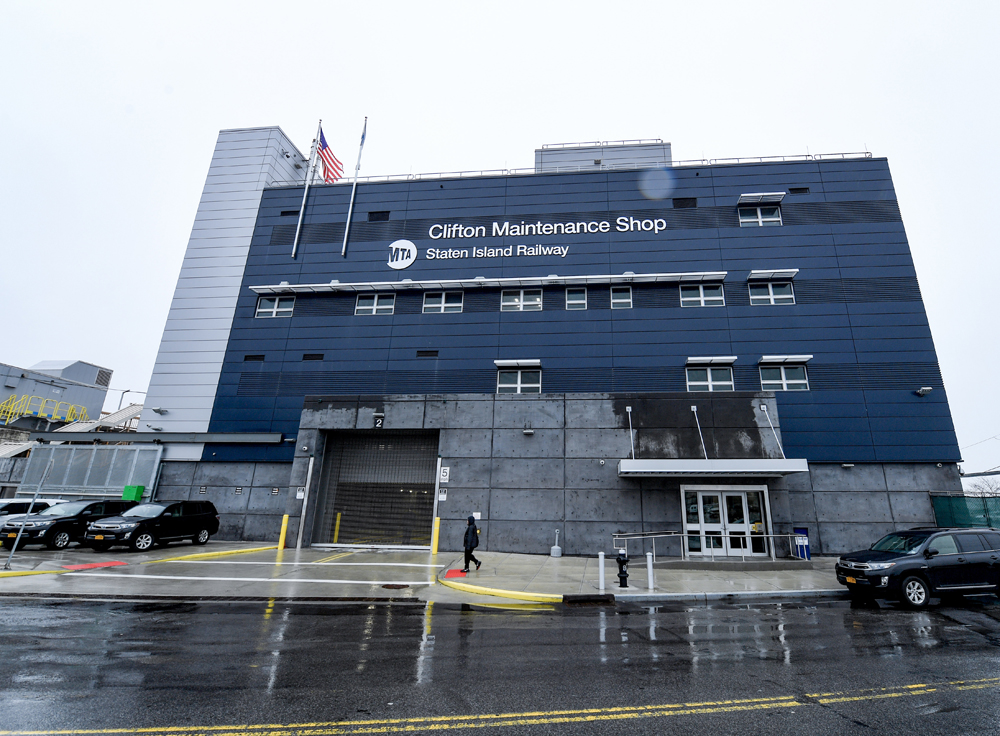
“A new Clifton Shop means Staten Island Railway cars will be maintained and repaired on site instead of in Brooklyn,” New York City Transit President Richard Davey said in a press release. “I’m excited for riders to see more reliable and efficient service for years to come.”
The $165 million project was funded through the Federal Transit Administration’s Hurrican Sandy recovery program.
“This state-of-the-art facility will be the home base of Staten Island Railway operations and is key to delivering more reliable and resilient transit for Staten Islanders,” said MTA Chair and CEO Janno Lieber. “We couldn’t have completed this project without our partners at the U.S. DOT’s Federal Transit Administration and the U.S. Department of Transportation.”
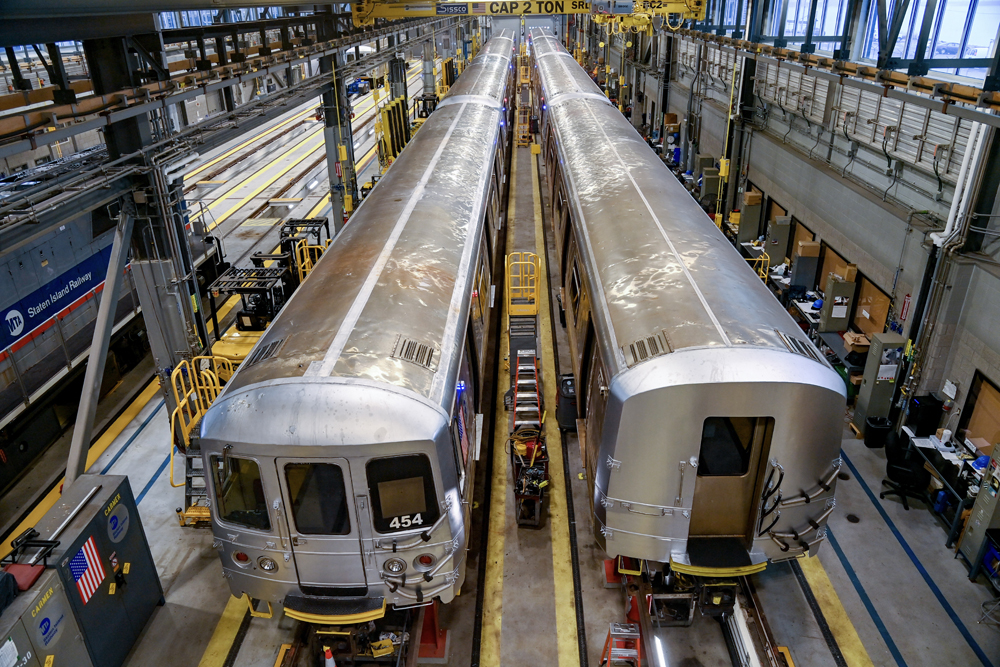






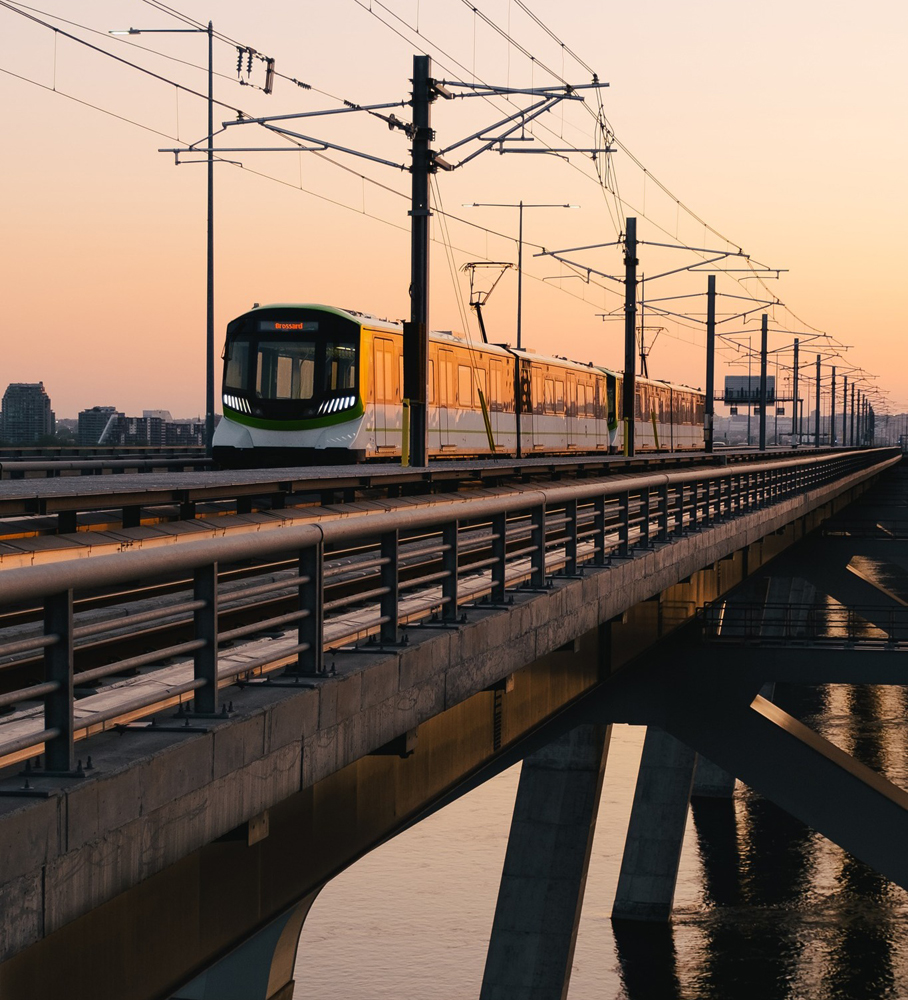
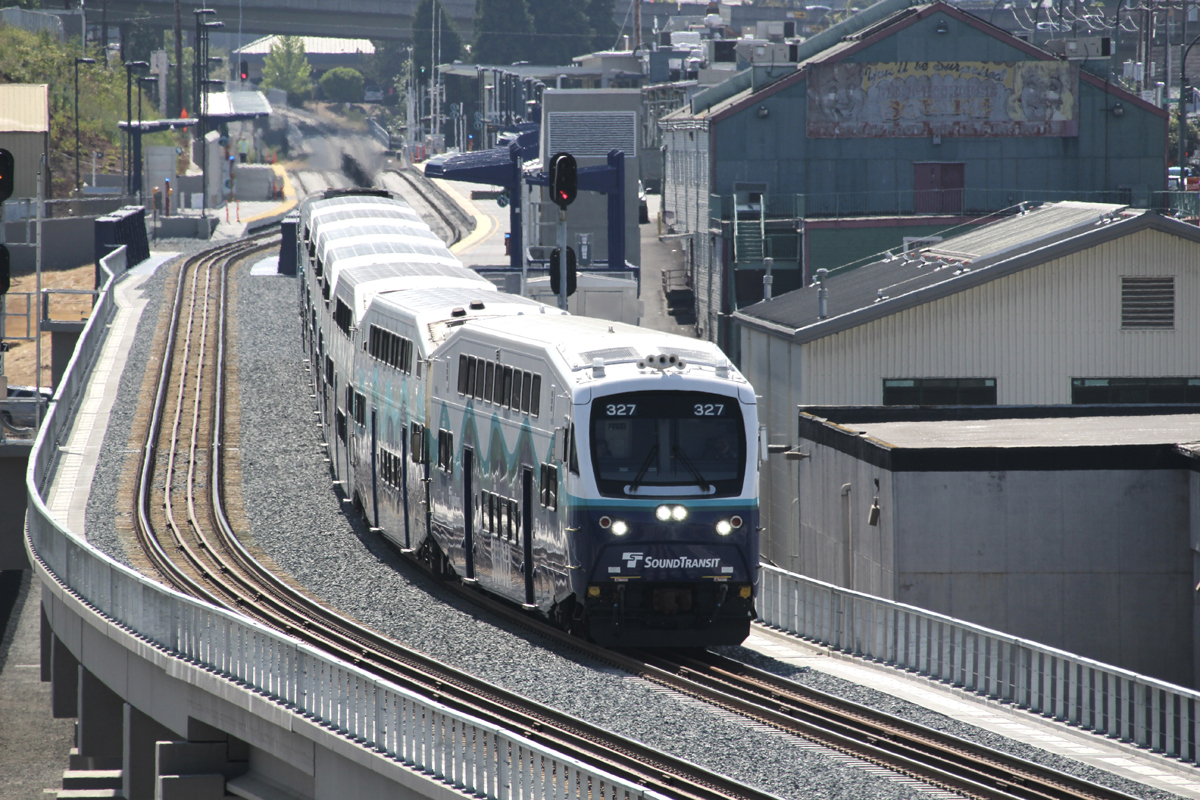
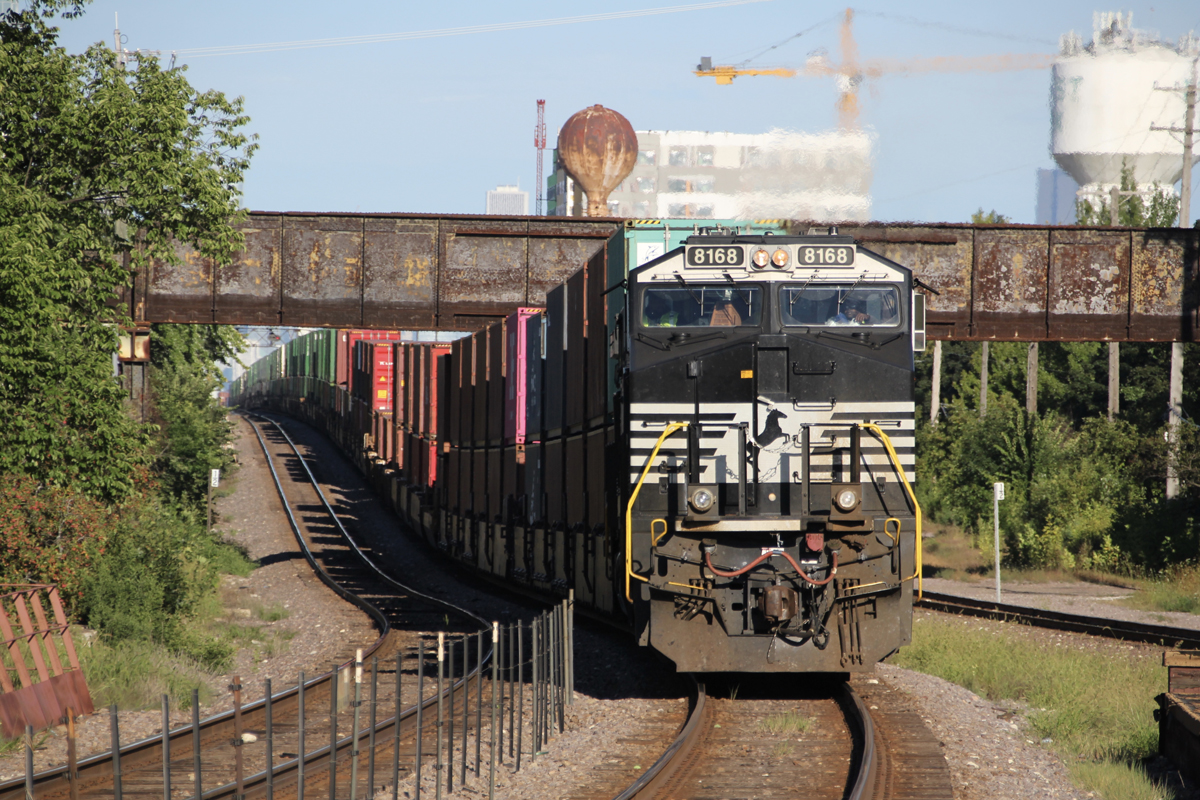
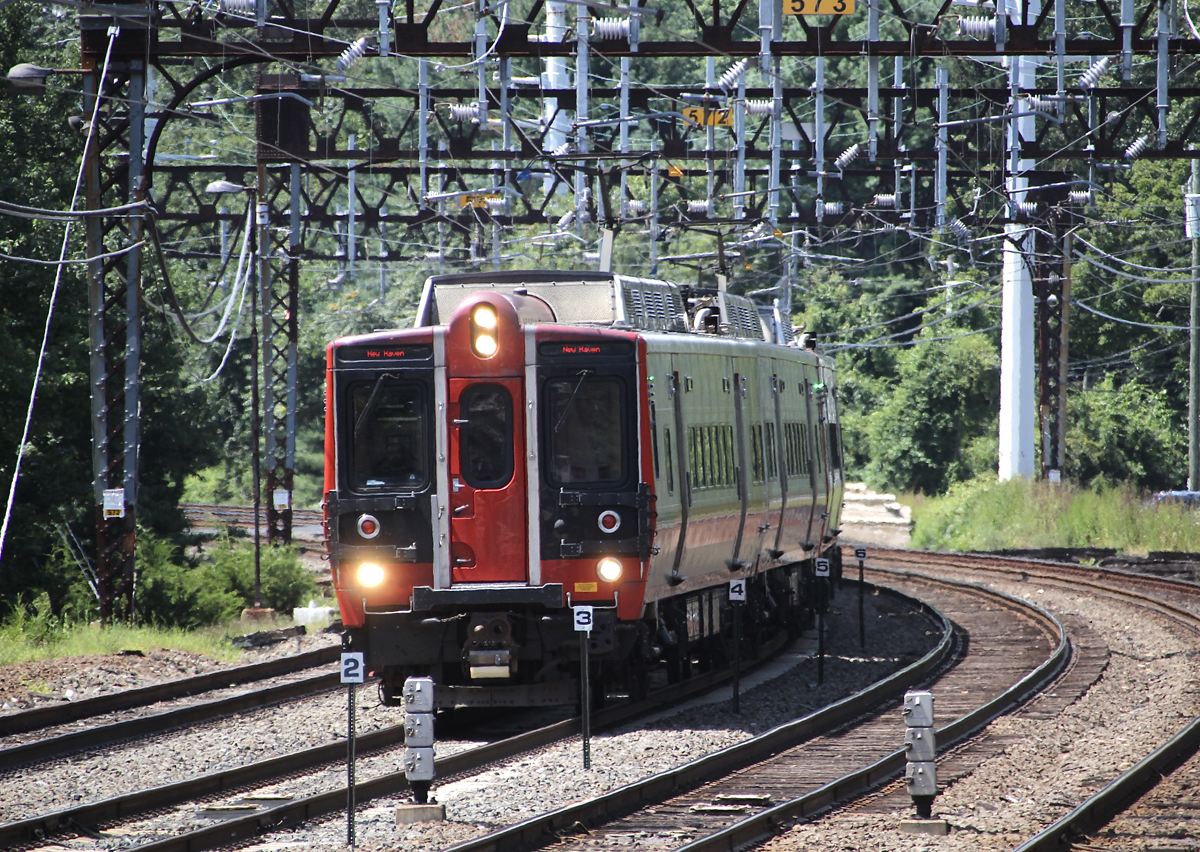




Thanks for that info- I remember when the SIRT brought some MU cars from the Long Island Railroad as fill in until the R-44 cars came on line. As a child growing up in Queens, my parents and I would make frequent trips on the Staten Island Ferry to St George and I don’t how many times I bugged my parents to ride on the SIRT and finally they gave in and we took that ride to the end of the line at Tottenville. On that ride, I remember seeing the set of LIRR mus being used and I remember those big old MUs that were painted a dark blue and had the B&O name on the top. One thing that fascinated me was how the conductors on those trains were able to remember where eachpassenger was going and the stop that they had to get off at and with such good memory and efficiency. One other item The R-44 cars that are still operating on the now named SIR werethe first R-44 cars to enter service for the MTA before the rest of the R-44 fleet for the A,E,F and D lines. The Staten Island fleet of R-44 cars are presently the oldest and longest operating cars in the transit system and still running today in part to the dedicated staff at the Clifton shops to keep these cars working . There were a few R-44 cars brought in from the rest of the subway system to bolster the current fleet. In another two to three years the R-44 cars will be replaced by a new fleet of R-211 cars and which both the shops, signaling and stations are being upgraded to handle these new hi-tech cars. Hence the the first batch of R-44 cars which began service in 1972 will become the last R44 cars operating and will close out that era.
Joseph C. Markfelder
SIRT cars are not compliant with FRA standards and would need an FRA exemption to move by rail on their own wheels.
I do not know of any active float bridges remaining on Staten Island. To go on their own wheels to Brooklyn, or as rail cargo on a flat car, the SIRT cars would have to go West to NJ, then return East to Greenville and float over to 65th St Brooklyn.
All-rail via Selkirk is some 300 miles. Tow thru Penn Station? As a New Yorker would say, fuhgeddaboudit.
Truck over the Verrazano? It can be done overnight with SIRT and NYCTA handling the loading and unloading. It would be a permit load with escorts but would not take several days and multiple train crews. This makes the most sense.
Before the current cars were delivered, the original SIRT MU cars were failing, and LIRR sent some cars over to fill in and ERA had a fantrip with the old cars. We were photographing a pair of LIRR carswhen a lady asked why we were taking pictures. A friend, noting “LONG ISLAND” in the letterboards, told her “They’re on the wrong island!”
Not sure of this but I heard one time that cars needing major repairs or overhaul were actually loaded onto flatbed trailers and trucked over the Verazzano Bridge into Brooklyn and the Coney Island shops. Of course such an operation as this would have been done in the overnight hours with an escort to clear traffic ahead for the trip into Brooklyn. Again I’m not sure of this but you can add me to the list of folks curious to know if this was the case or any other method used to transport cars needing major repair and overhaul to Coney Island.
One other observation- Staten Island may have the smallest amount of any trackage in the five boroughs of New York City but it is connected to the mainland of the U S and New Jersey by a line that handles freight and the CSX runs garbage and refuse trains over this line from Staten Island into New Jersey. Some freight still runs through the Staten Island Railway line but very minimal. Also the Staten Island Railway is operated under the rules of the FRA. Hence it is considered a railroad and not as a transit line even the equipment has to meet certain standards and operating procedures set by the FRa apart form the rest of the New york City Transit Authority
Joseph C. Markfelder
How did cars get to Brooklyn?
I’m guessing by rail to former PRR Greenville Yard in Jersey City, where there is still an active carfloat to Brooklyn, run by Port Authority of NY and NJ. An all-rail route would be far more miles.
That was my guess also. On flat cars. I believe that’s how new cars from the manufacturer get delivered to Brooklyn, if I correctly remember an article years ago in TRAINS about the carfloat.
So we have two “guesses”, from George and me. Does anyone actually know?